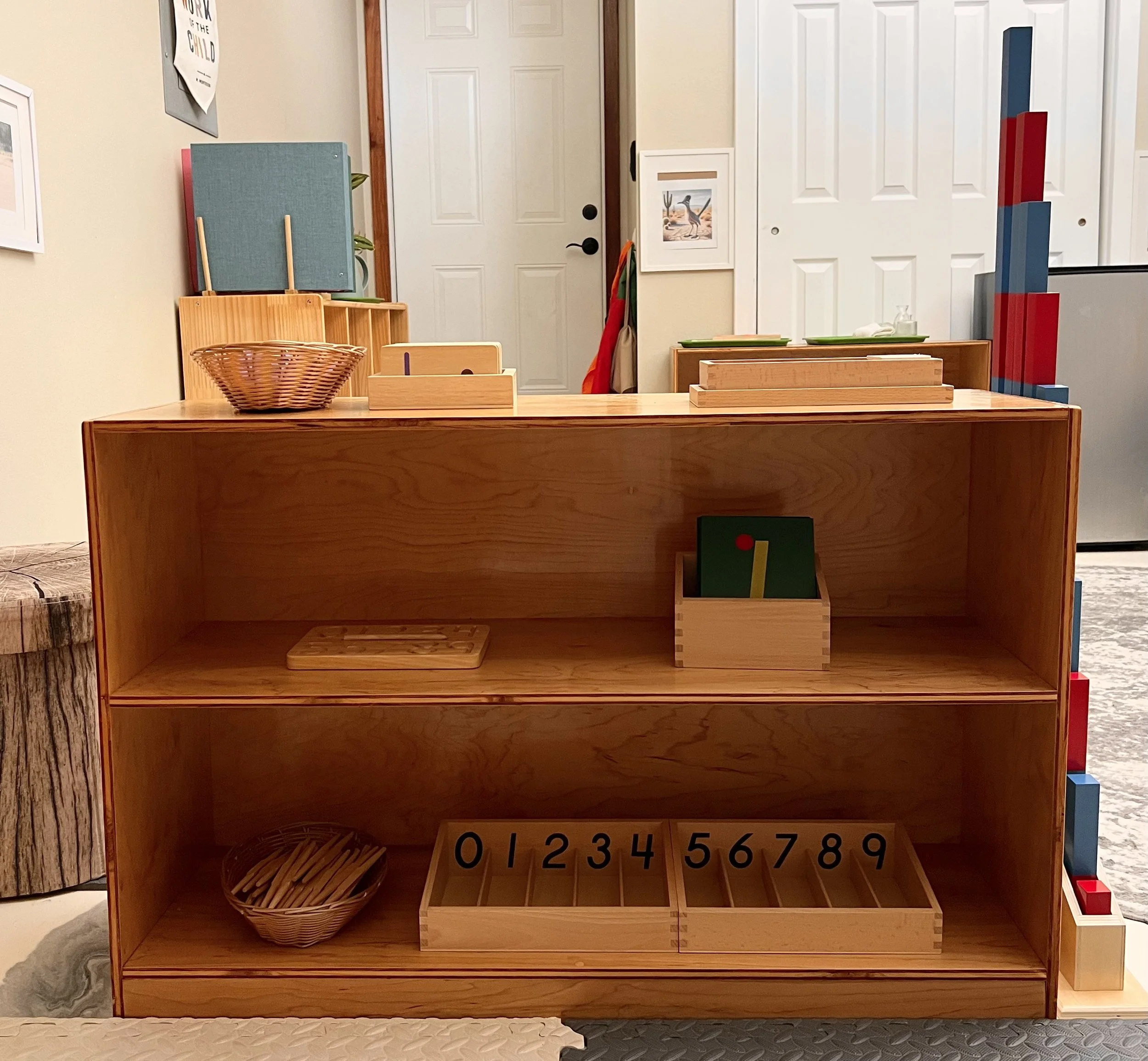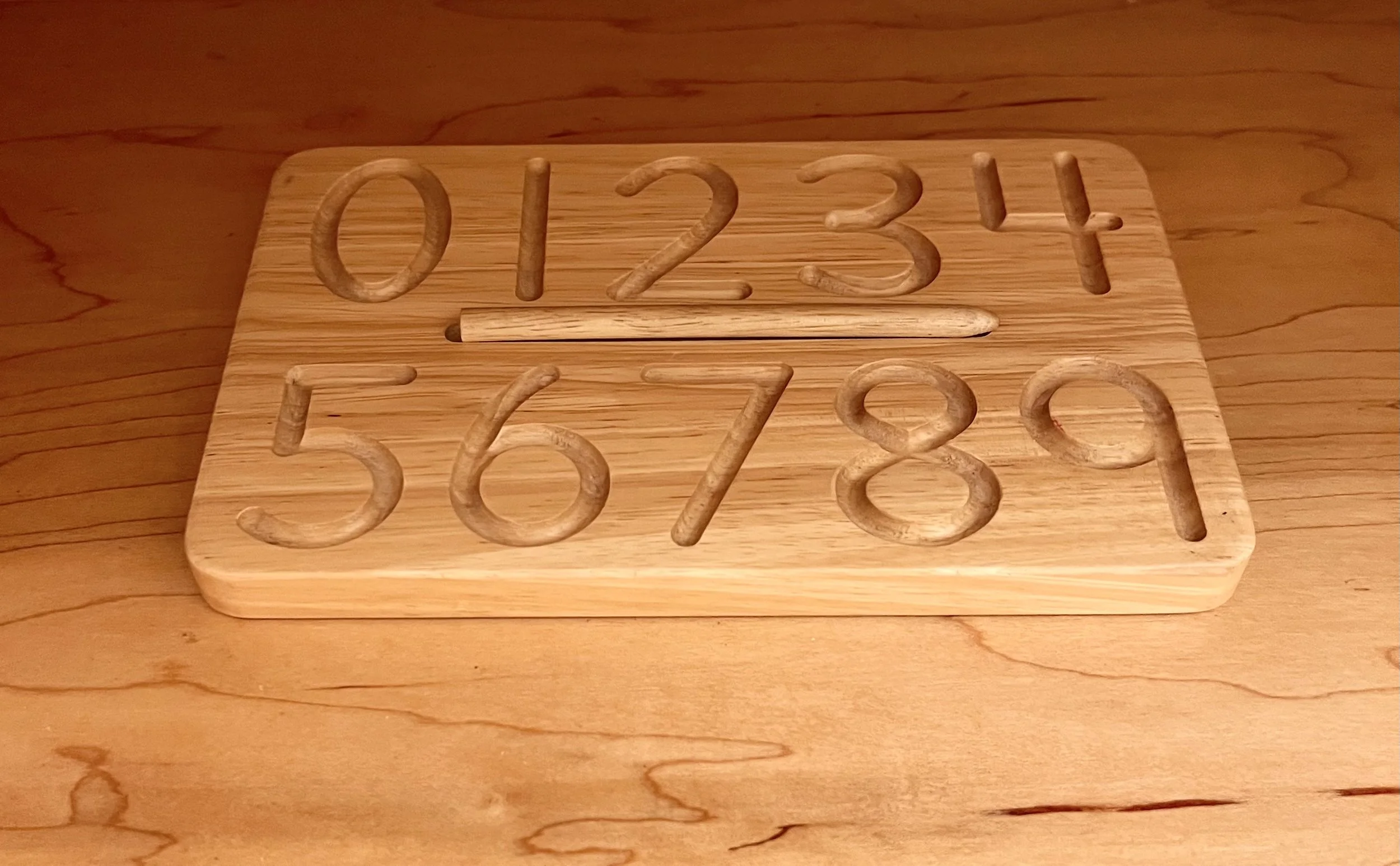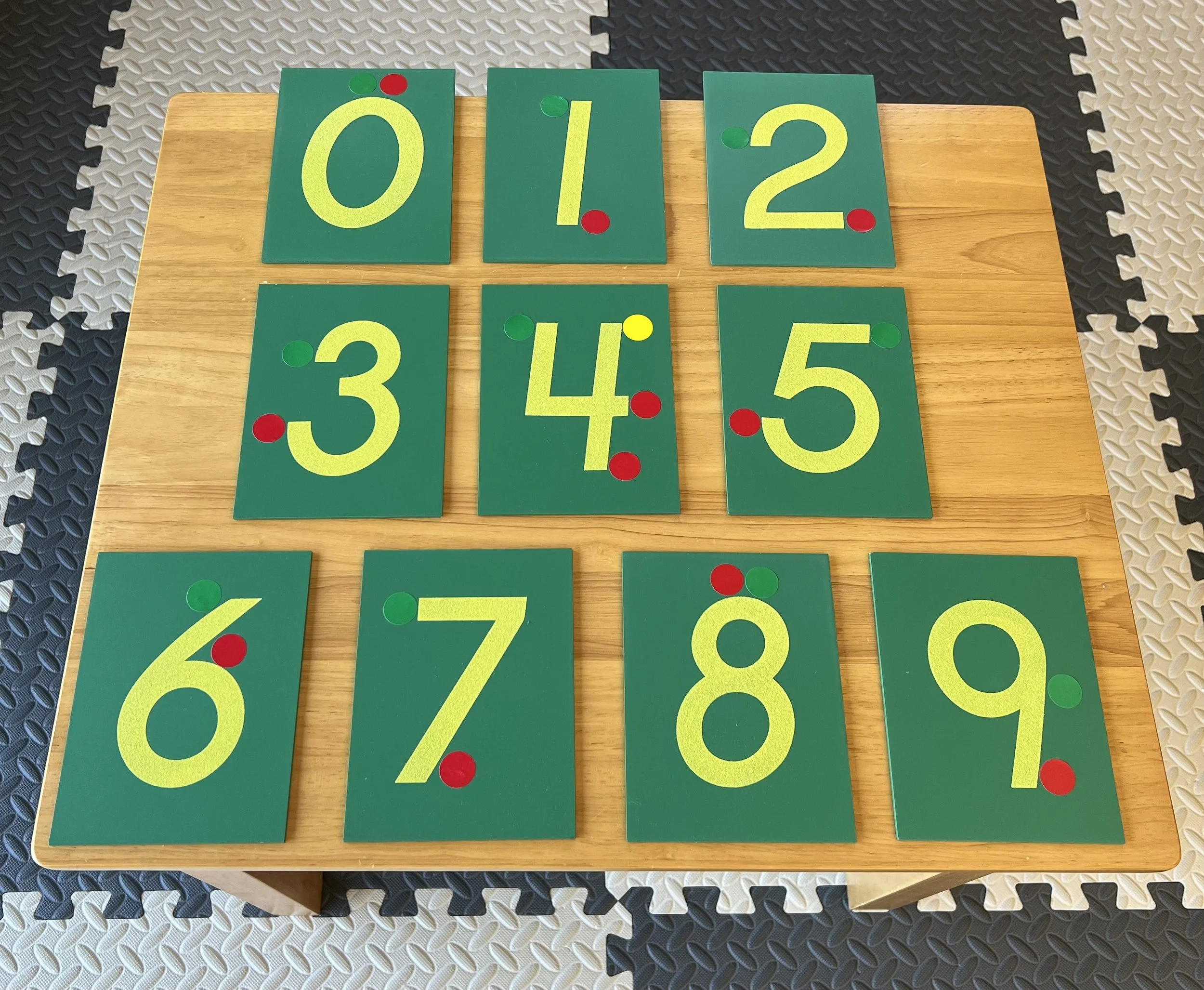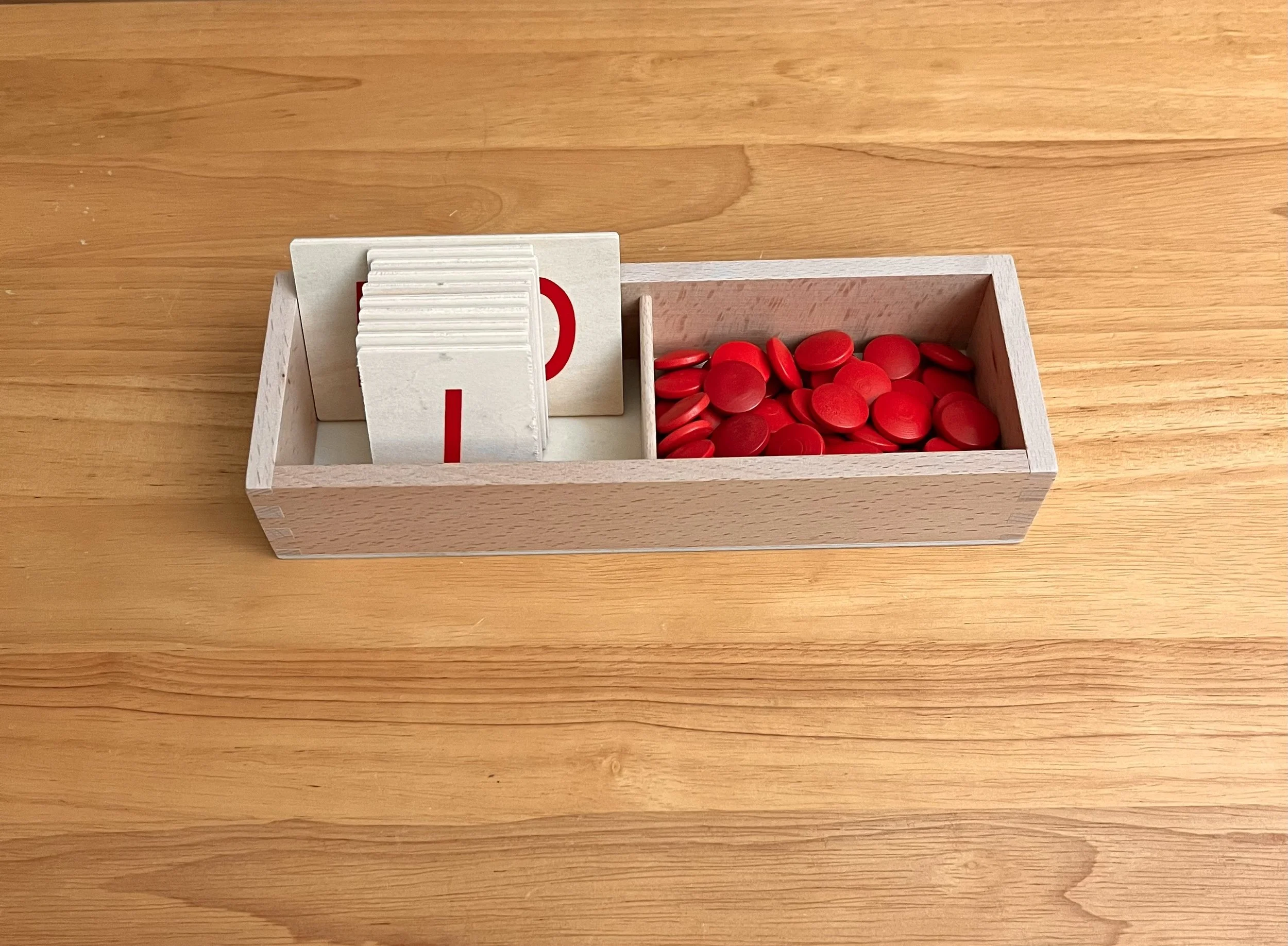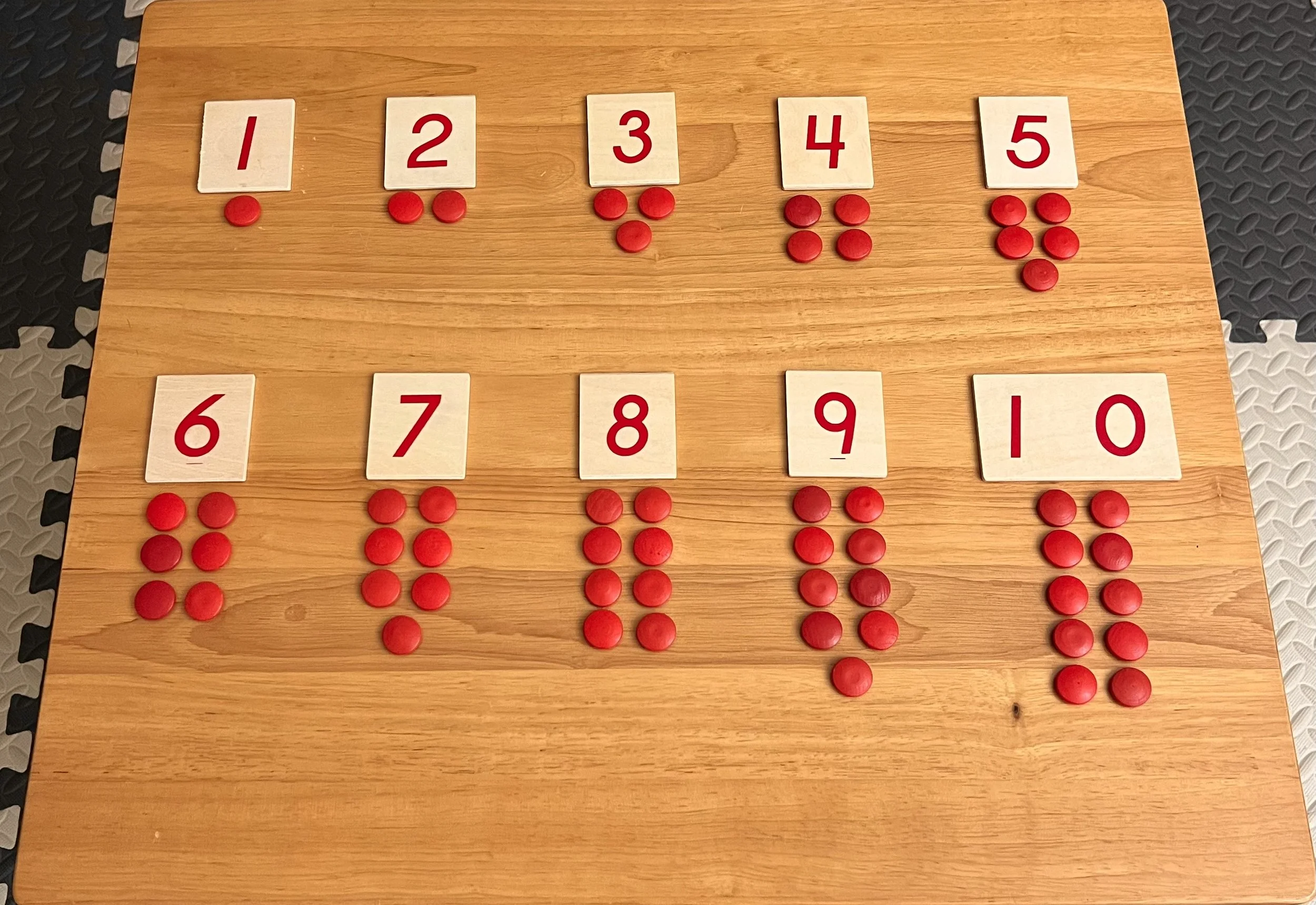Mathematics
In a Montessori learning space, the Mathematics area offers children hands-on activities that help them understand numbers, patterns, and mathematical concepts. Children work with materials such as number rods, sandpaper numerals, bead chains, and golden beads to explore counting, place value, and the four operations. These engaging, self-correcting materials allow children to learn at their own pace while developing problem-solving skills, logical thinking, and a strong foundation for the learning of advanced mathematical concepts.
In our Mathematics area, children begin with learning basic oral counting using simple counters. They then move to matching the counted number with its numeric symbol utilizing a wooden tablet and eventually sandpaper numbers. When they are comfortable with the numbers 1 to 10, they begin exploring basic addition and subtraction with number rods, number counters, and spindle boxes. As their understanding grows, children move on to place value, the order of operations, and more advanced numeric and algebraic concepts. More details about these materials are provided below. Please note that as a class, we have just began the mathematics curriculum and are still in the process of learning the values and symbols for numbers 1 to 10. The materials shown will reflect this.
In our classroom
The number peg boards activity is designed to help children develop one-to-one correspondence, number recognition, and an understanding of quantity. Each wooden board is labeled with a numeral 1 to 10 and contains corresponding holes for pegs. Children select a board, identify the number, and place the correct quantity of pegs into the holes. Through hands-on experience, children practice counting in sequence, visually match numerals to quantities, and strengthen fine motor skills. This activity lays the foundation for future mathematical learning by linking symbols (numerals) to actual quantities, an essential step in Montessori math progression.
The number rods introduce children to the concept of quantity through length. Each rod is divided into alternating red and blue sections, representing numbers from 1 to 10. By arranging the rods in order, children experience counting in sequence and see the gradual increase in size. With the addition of number cards, they also learn to match each rod to its written numeral, strengthening the connection between symbol and quantity. This activity creates a strong foundation for future work with addition and subtraction.
Sandpaper numbers allow children to explore numerals 0 - 9 through sight, touch, and sound, forming a strong foundation for writing. Each numeral has starting and stopping points marked by a green dot (start), red dot (stop), and yellow dot (second start), guiding children to trace each number correctly and build proper hand eye coordination. This multi sensory approach reinforces numeral recognition, linking the symbol with its name, and prepares the hand for writing.
The wooden tracing board provides children with a hands-on way to practice writing numbers and shapes. One side of the board features numbers with grooves, while the other side includes simple geometric shapes. Using a wooden pencil, children trace the grooves repeatedly, strengthening fine motor skills and hand control. This repetition builds muscle memory, reinforces number recognition, and prepares children for writing on paper. Together with the number peg board, number rods, and sandpaper numbers, the tracing board supports a sequential, multi sensory approach to early math development, moving children from counting to numeral recognition to writing.
Spindle boxes help children link written numerals to physical quantities in a clear, hands-on way. Children count and place wooden spindles into compartments labeled 0 to 9, and they can tie the spindles together to represent a specific quantity, reinforcing the concept of grouping and number value. Unlike fixed materials such as number rods, spindle boxes offer loose quantities, giving children a more advanced, flexible understanding of numbers and sets. The empty compartment labeled ‘0’ introduces the concept of nothingness, providing a visual and tactile experience of zero.
Number cards with counters help children connect written numerals with concrete sets of objects. Children place the correct number of counters beneath each card, working with loose quantities that allow more flexible exploration than the fixed quantities of the number rods or even the loose but grouped quantities of the spindle boxes. As they arrange the counters in pairs, children naturally discover the concept of odd and even numbers, with the odd ones always containing a counter without a pair. This builds number recognition, sequencing, and an early understanding of arithmetic operations.

